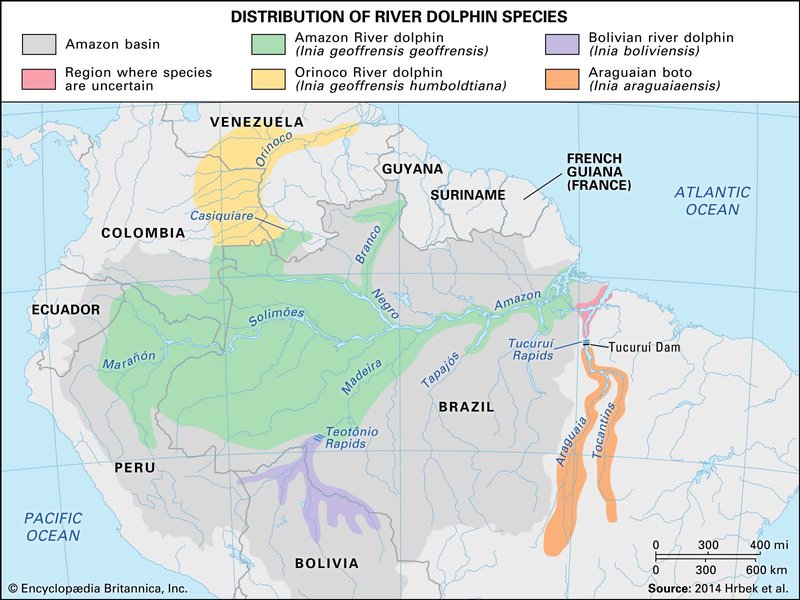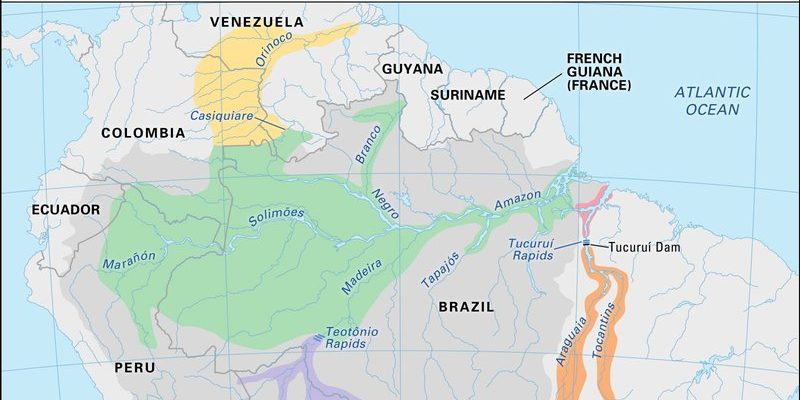
These dolphins aren’t your typical ocean dwellers. Instead, they thrive in the freshwater rivers and lakes of South America and Asia. Each species has adapted to its own specific river habitats, showcasing their incredible resilience. So, let’s dive deep into the world of river dolphins and explore where they live, how they adapt, and what makes their habitats so special.
The Primary Locations of River Dolphins
River dolphins inhabit a variety of freshwater environments around the globe. The most well-known species include the Amazon river dolphin, the Yangtze river dolphin, and the Indo-Pacific humpbacked dolphin. Each species calls different rivers and regions home, and their territories can be quite distinct.
– Amazon River Dolphin (Boto): The Amazon river dolphin, often called the boto, primarily resides in the Amazon River basin. This area stretches across several countries, including Brazil, Peru, and Colombia. The Amazon is a vast network of waterways filled with tributaries, lakes, and flooded forests, providing rich feeding grounds for these dolphins.
– Yangtze River Dolphin (Baiji): Once, the baiji or Yangtze river dolphin swam in the waters of the Yangtze River in China. Sadly, they are now critically endangered and possibly extinct, mainly due to habitat loss and pollution. The Yangtze River itself is an important waterway for the region, but it has faced immense environmental pressures over the years.
Importance of River Ecosystems
The habitats of river dolphins are not just home to these creatures; they serve essential functions for the entire ecosystem. Rivers are living highways for many species, including fish, turtles, and various plant life. These ecosystems depend on healthy water conditions and biodiversity. River dolphins play a crucial role in maintaining this balance. They help control fish populations and serve as indicators of the overall health of these freshwater environments.
Unique Habitat Conditions
The habitats of river dolphins are anything but ordinary. Unlike their ocean cousins, river dolphins must adapt to murky waters with varying levels of salinity, temperature, and flow. They have evolved some interesting traits to thrive in these unique conditions.
– Echolocation: River dolphins have a sophisticated way of navigating and finding food in their often-turbid environments—through echolocation. This means they use sound waves to locate objects and prey around them. Their ability to produce clicks and listen for the echoes allows them to “see” their surroundings in a way that’s crucial for survival.
– Flexible Food Sources: Depending on the river they inhabit, river dolphins often have a varied diet. They might feast on fish, crustaceans, or even small mammals. For example, the Amazon river dolphin is known to consume over 50 different fish species, showcasing their adaptable feeding habits. This flexibility is essential for thriving in fluctuating river conditions.
Seasonal Changes and Their Impact
Rivers aren’t stagnant; they’re alive and changing with the seasons. Some river dolphins experience significant changes in their habitats, which can affect their movement and behavior. For instance, during the rainy season, certain rivers swell, creating new feeding grounds and migration routes for the dolphins. In contrast, during the dry season, these rivers can shrink, leading to more concentrated populations of prey and increasing competition among dolphins.
Human Impact on River Dolphin Habitats
Unfortunately, river dolphins face numerous threats due to human activities. Here’s the thing: as rivers become more industrialized, the delicate balance of these habitats is often disrupted. Urbanization, agriculture, and pollution can lead to habitat degradation, threatening the survival of these unique creatures.
– Pollution: Chemicals and waste entering the rivers can severely affect water quality. Contaminated waters can lead to health issues for river dolphins and other wildlife, disrupting their food sources and habitats.
– Dam Construction: Dams disrupt the natural flow of rivers, altering the habitats that dolphins rely on. When rivers are dammed, migration patterns are affected, and feeding grounds may become inaccessible. Additionally, dammed areas can lead to stagnant waters, which are less suitable for many aquatic species.
Conservation Efforts
Recognizing the plight of river dolphins has sparked a wave of conservation efforts across the globe. Organizations and governments are working to protect their habitats and ensure these incredible creatures survive for future generations. Efforts include:
– Protected Areas: Establishing marine protected areas helps safeguard critical habitats for river dolphins. These areas limit human activities that may harm dolphins and their environments.
– Public Awareness Campaigns: Educating communities about the importance of river ecosystems and the challenges faced by river dolphins is crucial. Awareness can inspire action and promote responsible practices in river management.
The world of river dolphins is a fascinating mix of beauty and challenge. Their habitats tell a story of resilience, adaptation, and the delicate balance of ecosystems. The future of these incredible animals hinges on our awareness and actions. Protecting their habitats isn’t just about saving dolphins; it’s about preserving the health of our rivers and ensuring that they continue to support diverse wildlife.
As we look forward, let’s remember that every effort counts. From supporting conservation initiatives to spreading awareness, we can all play a part in safeguarding the homes of river dolphins. Together, we can help ensure their longevity and the health of the precious river ecosystems they inhabit.

